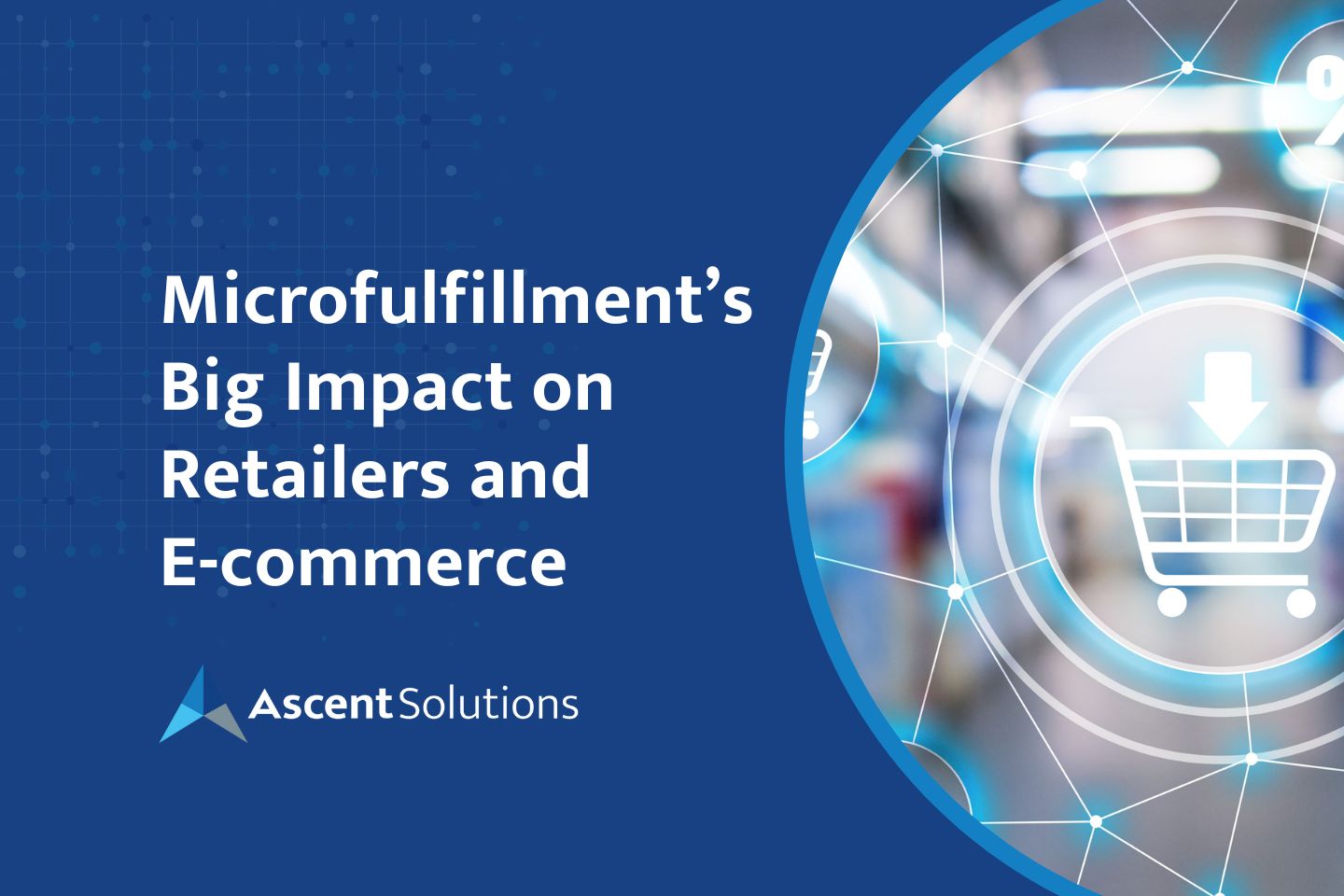Microfulfillment’s Big Impact on Retailers and Ecommerce
View All: Resources

Adapting to the New Normal: Strategies for Small and Medium-Sized Retailers Post-Pandemic
What a year it’s been. As economic growth and consumer spending begin to stabilize, one thing remains very clear—consumer shopping habits have been forever changed by the pandemic.
When it’s commonplace for grandparents to know Instacart’s delivery window and how to easily transact on a mobile device, times have truly changed. Companies have responded in kind, adopting new supply chain strategies such as microfulfillment to keep customers loyal.
So how does this huge shift impact retailers? If you’re a well-funded SaaS startup or behemoth omnichannel retailers like Amazon or Walmart, you’ve likely already capitalized on the trend. But what about small and medium-sized retailers that don’t fit this profile? How can they take advantage of shifts in consumer habits and fend off a slew of new competitors?
Enter Microfulfillment
What is microfulfillment? CB Insights has a definition we really like:
Microfulfillment is a strategy retailers use to make the fulfillment process more efficient — from receiving an online order to packing it and in some cases offering last-mile delivery. The approach aims to take the speed of localized, in-store pick-up and combine it with the efficiency of large, automated warehouses. Further, placing microfulfillment centers (MFCs) within cities can substantially reduce the distance between an ordered product and a customer, making last-mile delivery cheaper and quicker.
MFCs are technology and space-enabled fulfillment centers that take up a fraction of the real estate traditional fulfillment centers do. Think 3,000 square feet instead of 300,000 and MFCs can be located just about anywhere. Why are they critical? Because smaller retailers will struggle over the long run to compete with the resources of Amazon, who spent $1.5B on a state-of-the-art distribution facility in Kentucky (source). However, with MFCs being much more cost-effective to create and manage, it can begin to level the playing field for retailers.
Shop How You Want, When You Want
MFCs also empower retailers to provide a better customer experience and enable consumers to truly shop how they want. Care about safety and only want home delivery? Check. Like to shop online and pick up at the store? Check. Do you want to get out of the house for a click-and-collect in-store experience? Check.
MFCs help power these experiences because a good omni-channel commerce provider coupled with a modern fulfillment process enables more retailers to deliver these types of experiences to their customers at scale. The latest statistics back this up too as before the pandemic, e-commerce accounted for 2-3% of overall sales within the grocery sector and even less in rural areas. Many retailers are now seeing numbers in the high 20% range with some over 30% (source).
Last Mile Delivery Improves with Microfulfillment
While this is great for consumers and some retailers, it can be a massive undertaking for many businesses. Especially with customer expectations at all-time highs for same-day delivery, variety of inventory, and a high-quality experience. The good news is MFCs help retailers solve many of these challenges. For example, to improve delivery times retailers are now setting up “last-mile” delivery systems using MFCs in urban centers. This enables the goods to be closer to the end consumer and cuts down on travel times. Retailers are also leveraging technology that automates and improves activity within MFCs such as robotics for picking and packing goods and cloud-based software that uses artificial intelligence (AI), the internet of things (IoT), and other helpful applications to make the business process behind the inventory management more efficient.
Cloud Technology Enables Microfulfillment
Ascent Solutions is a team of distribution and manufacturing technology enthusiasts that understand the shifting landscape for retailers. Over a decade ago we made the strategic decision to become a Salesforce ISV partner and have been building cloud-based apps and industry solutions that extend Salesforce from the front office (i.e. traditional CRM) to the back office for ERP, inventory, order management, demand planning, and reverse logistics.
So why not take advantage of these sweeping new consumer trends and potentially lower overhead costs associated with MFCs, which in some cases are 75% less than manual picking (source)? The time is now to explore reinvesting funds into MFCs and cloud technologies that can help you scale operations more efficiently and take on the big box retailers on a more even playing field.
Learn about our 100% native Salesforce apps on AppExchange: Ascent ERP, Ascent IM, Ascent OM, Label Anything, and Rental, or contact us today.
Follow Us
Have questions? We can help!
Ascent Solutions will provide you with ultimate customer service, attending to all of your needs promptly and efficiently. Our goal is to serve as your partner so that all of your needs are met in accordance with your schedule and align with your budget.
- Call Us: 908-981-0150
- Ascent: Contact Us
Related Posts
Categories
Why Ascent?
We are distribution and manufacturing technology enthusiasts that understood the term “ERP” was oversold and under delivered. We designed a flexible platform to ensure that we are able to adapt and evolve with businesses from the startup to enterprise level yet keep our offering affordable.






